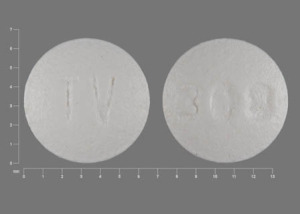Hydroxyzine Disease Interactions
There are 9 disease interactions with hydroxyzine.
- Depression
- QT prolongation
- Anticholinergic effects
- Asthma/COPD
- Cardiovascular
- Renal/liver disease
- Glaucoma
- Liver disease
- Renal/liver disease
Anxiolytics/sedatives/hypnotics (applies to hydroxyzine) depression
Major Potential Hazard, Moderate plausibility.
A variety of abnormal thinking and behavior changes have been reported to occur in association with the use of most anxiolytics, sedatives and hypnotics. Some of these changes include decreased inhibition, aggressiveness, agitation, and hallucinations. These drugs can cause or exacerbate mental depression and cause suicidal behavior and ideation. Therapy with these drugs should be administered cautiously in patients with a history of depression or other psychiatric disorders. Patients should be monitored for any changes in mood or behavior. It may be prudent to refrain from dispensing large quantities of medication to these patients.
Hydroxyzine (applies to hydroxyzine) QT prolongation
Major Potential Hazard, Moderate plausibility. Applicable conditions: Long QT Syndrome, Ventricular Arrhythmia, Myocardial Infarction, Heart Disease
Hydroxyzine is contraindicated in patients with a QT prolonged interval. Cases of QT prolongation and Torsade de Pointes have been reported during postmarketing studies. Most of the cases reported occurred in patients with other risk factors for QT prolongation, such as preexisting heart disease, electrolyte imbalances or arrhythmogenic drug use. Therefore, hydroxyzine should be used with caution in patients with risk factors for QT prolongation, congenital long QT syndrome, family history of long QT syndrome or other predisposing conditions, as well as myocardial infarction, uncompensated heart failure, and bradyarrhythmias.
Antihistamines (applies to hydroxyzine) anticholinergic effects
Moderate Potential Hazard, High plausibility. Applicable conditions: Gastrointestinal Obstruction, Glaucoma/Intraocular Hypertension, Urinary Retention
Antihistamines often have anticholinergic activity, to which elderly patients are particularly sensitive. Therapy with antihistamines should be administered cautiously, if at all, in patients with preexisting conditions that are likely to be exacerbated by anticholinergic activity, such as urinary retention or obstruction; angle-closure glaucoma, untreated intraocular hypertension, or uncontrolled primary open-angle glaucoma; and gastrointestinal obstructive disorders. Conventional, first-generation antihistamines such as the ethanolamines (bromodiphenhydramine, carbinoxamine, clemastine, dimenhydrinate, diphenhydramine, doxylamine, phenyltoloxamine) tend to exhibit substantial anticholinergic effects. In contrast, the newer, relatively nonsedating antihistamines (e.g., cetirizine, fexofenadine, loratadine) reportedly have low to minimal anticholinergic activity at normally recommended dosages and may be appropriate alternatives.
Antihistamines (applies to hydroxyzine) asthma/COPD
Moderate Potential Hazard, Moderate plausibility. Applicable conditions: Chronic Obstructive Pulmonary Disease
It has been suggested that the anticholinergic effect of antihistamines may reduce the volume and cause thickening of bronchial secretions, resulting in obstruction of respiratory tract. Some manufacturers and clinicians recommend that therapy with antihistamines be administered cautiously in patients with asthma or chronic obstructive pulmonary disease.
Antihistamines (applies to hydroxyzine) cardiovascular
Moderate Potential Hazard, Moderate plausibility. Applicable conditions: Cardiovascular Disease, Hyperthyroidism, Hypotension
Antihistamines may infrequently cause cardiovascular adverse effects related to their anticholinergic and local anesthetic (quinidine-like) activities. Tachycardia, palpitation, ECG changes, arrhythmias, hypotension, and hypertension have been reported. Although these effects are uncommon and usually limited to overdosage situations, the manufacturers and some clinicians recommend that therapy with antihistamines be administered cautiously in patients with cardiovascular disease, hypertension, and/or hyperthyroidism.
Antihistamines (applies to hydroxyzine) renal/liver disease
Moderate Potential Hazard, High plausibility. Applicable conditions: Renal Dysfunction
Limited pharmacokinetic data are available for the older, first-generation antihistamines. Many appear to be primarily metabolized by the liver, and both parent drugs and metabolites are excreted in the urine. Patients with renal and/or liver disease may be at greater risk for adverse effects from antihistamines due to drug and metabolite accumulation. Therapy with antihistamines should be administered cautiously in such patients. Lower initial dosages may be appropriate.
Anxiolytics/sedatives/hypnotics (applies to hydroxyzine) glaucoma
Moderate Potential Hazard, Moderate plausibility. Applicable conditions: Glaucoma/Intraocular Hypertension, Urinary Retention
Some hypnotic drugs can have an anticholinergic effect and should be used with caution in patients with glaucoma, and trouble urinating due to retention or enlarged prostate.
Anxiolytics/sedatives/hypnotics (applies to hydroxyzine) liver disease
Moderate Potential Hazard, Moderate plausibility.
In general, anxiolytics, sedatives and hypnotics are extensively metabolized by the liver. Their plasma clearance may be decreased and their half-life prolonged in patients with impaired hepatic function. Therapy with these drugs should be administered cautiously in patients with liver disease (some are not recommended in severe liver impairment), and the dosage should be adjusted accordingly. Laboratory testing is recommended prior and during treatment.
Anxiolytics/sedatives/hypnotics (applies to hydroxyzine) renal/liver disease
Moderate Potential Hazard, Moderate plausibility. Applicable conditions: Renal Dysfunction
Some anxiolytics, sedatives and hypnotics are extensively metabolized by the liver, and excreted in the urine. Patients with impaired renal and/or hepatic function may be at greater risk for adverse effects, including central nervous system and respiratory depression, due to drug and metabolite accumulation. Therapy with these drugs should be administered cautiously in such patients, with careful dose selection usually starting at the low end of the dosing range.
Switch to professional interaction data
Hydroxyzine drug interactions
There are 581 drug interactions with hydroxyzine.
Hydroxyzine alcohol/food interactions
There is 1 alcohol/food interaction with hydroxyzine.
More about hydroxyzine
- hydroxyzine consumer information
- Check interactions
- Compare alternatives
- Pricing & coupons
- Reviews (1,404)
- Drug images
- Side effects
- Dosage information
- Patient tips
- During pregnancy
- Support group
- Drug class: antihistamines
- Breastfeeding
- En español
Related treatment guides
Drug Interaction Classification
| Highly clinically significant. Avoid combinations; the risk of the interaction outweighs the benefit. | |
| Moderately clinically significant. Usually avoid combinations; use it only under special circumstances. | |
| Minimally clinically significant. Minimize risk; assess risk and consider an alternative drug, take steps to circumvent the interaction risk and/or institute a monitoring plan. | |
| No interaction information available. |
Further information
Always consult your healthcare provider to ensure the information displayed on this page applies to your personal circumstances.


